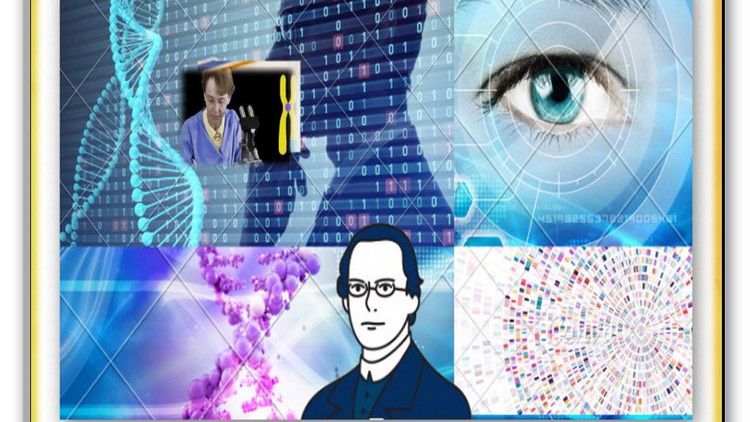
Genetics principales and Applications
What you will learn
introduction to genetic as science influence every day life
Genetic material and replication
Gene expression transcription and translation
DNA mutation and repair
regulation of gene expresion
Description
the science of heredity. Genetics is concerned primarily with understanding
biological properties that are transmitted from parent tooffspring. The subject matter of genetics includes hered-
ity, the molecular nature of the genetic material, the waysin which genes (which determine the characteristics of
organisms) control life functions, and the distributionand behavior of genes in populations.Genetics is central to biology because gene activityunderlies all life processes, from cell structure and function to reproduction.
Learning what genes are, how genes are transmitted from generation to generation
he principles of heredity were not understood untilthe mid-nineteenth century, when Gregor Mendel ana-
lyzed quantitatively the results of crossing pea plants thatvaried in easily observable characteristics. He published
his results, but their significance was not realized in hislifetime. Several years after his death, however, re-
searchers realized that Mendel had discovered fundamental principles of heredity
The structure of DNA was first described in 1953, andsince that time genetics has become one of the most excit-
ing and ground-breaking sciences. Our understanding ofgene structure and function has progressed rapidly since
molecular techniques were developed to clone or amplifygenes, and rapid methods for sequencing DNA became
available.
Research in genetics underwent a revolution in 1972,when Paul Berg constructed the first recombinant DNA
molecule in vitro, and in 1973, when Herbert Boyer andStanley Cohen cloned a recombinant DNA molecule for
the first time. The development by Kary Mullis in 1986of the polymerase chain reaction (PCR) to amplify
specific segments of DNA spawned another revolution.Recombinant DNA technology, PCR, and other molecular
technologies are leading to an ever-increasing number ofexciting discoveries that are furthering our knowledge of
basic biological functions and will lead to improvementsin the quality of human life.
In recent years, the sequencing of the genomes ofa large number of viruses and organisms has changed thescope of experiments performed by geneticists. For example, we can study a genome’s worth of genes now in oneexperiment, allowing us to obtain a more complete understanding of gene expression.
understanding of the abstract nature of genes (fromthe transmission genetics part) with the molecular nature
of genes (from the molecular genetics is one of the best approach
Classic Principles.
classic experiments, a number of which have led to discoveries
These experiments include:
•Griffith’s transformation experiment
•Avery and his colleagues’ transformation experiment
•Hershey and Chase’s bacteriophage experiment
•Meselson and Stahl’s DNA replication experiment
•Beadle and Tatum’s one-gene–one-enzyme hypothe-
sis experiments
•Mendel’s experiments on gene segregation
•Thomas Hunt Morgan’s experiments on gene linkage
•Seymour Benzer’s experiments on the fine structure
of the gene
•Jacob and Monod’s experiments on the lac operon
The Subdisciplines of Genetics
Geneticists often divide genetics into four major subdis-
ciplines:
1. Transmission genetics (sometimes called classical
genetics) is the subdiscipline dealing with how genes
and genetic traits are transmitted from generation to
generation and how genes recombine (exchange be-
tween chromosomes). Analyzing the pattern of trait
transmission in a human pedigree or in crosses of ex-
perimental organisms is an example of a transmis-
sion genetics study.
2. Molecular genetics is the subdiscipline dealing with
the molecular structure and function of genes. Ana-
lyzing the molecular events involved in the gene
control of cell division, or the regulation of expres-
sion of all the genes in a genome, are examples of
molecular genetics studies. Genomic analysis is part
of molecular genetics.
3. Population genetics is the subdiscipline that studies
heredity in groups of individuals for traits that are de-
termined by one or only a few genes. Analyzing the
frequency of a disease-causing gene in the human pop-
ulation is an example of a population genetics study.
4. Quantitative genetics also considers the heredity of
traits in groups of individuals, but the traits of concern
are determined by many genes simultaneously. Analyz-
ing the fruit weight and crop yield in agricultural
plants are examples of quantitative genetics studies.
Content